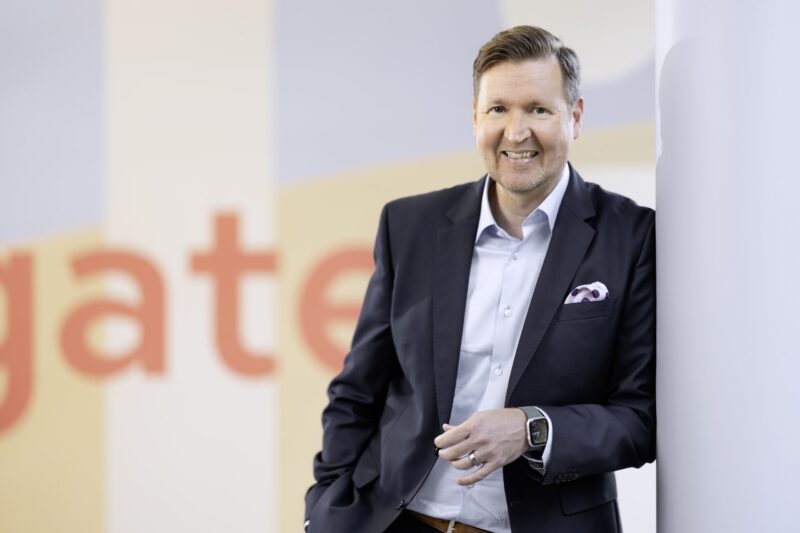Struggling with traditional IT system renewal? A new design methodology helps
Decision makers are often intimidated by IT-system renewal – and for a good reason. Choosing and implementing the right system is critical for the business. But all too often the renewal turns into a requirements specification process. This can, at its worst, result in the new system being just a more complex copy of the old one. Here, Sofigate expert Matti Saari explains how to focus on the essentials when planning a renewal.
How to succeed in renewing organisation’s IT systems? Common guidelines often emphasise the importance of describing the specific scope and detailed requirements of the system. This means you should stop wasting time in trying to adapt management team’s strategic targets with those of the system renewal. In the end, only clear, precise system requirements will lead to better offers… right?
Want to know more? Download the full guide
Actually no – this is not the case! This common approach results in two major challenges for the organisation and for those that are responsible. Let us consider the challenges from an ERP system point of view:
Challenge 1. Complex plans and requirements which are detached from business strategy
The ERP system is critical to the business, as it is the platform for day-to-day operations and finances. The business must have ownership of this system because it is so essential to the efficacy of the entire organisation and provides a foundation for future growth.
Often, leadership teams solemnly emphasise the importance of an ERP project, as well as their own responsibility and role in it. However, in practice, the targets and requirements of the renewal are drawn up by the procurement team, finance team, the IT department, or an external consultant.
The plans and descriptions are often made unnecessarily complex by specialists. This further increases the distance between the management team’s business targets and specialists’ practical requirements. Eventually, the organisation’s strategy is crammed into the beginning of the tendering documents – and is then forgotten as the discussion quickly turns to functional and technical requirements.
A year after the acquisition, the management team is reviewing reasons why the new system does not support business growth and increase operational efficiency. The management team realises the new system looks and feels like an updated version of the old system – made possible with complex customisations and seldom-used add-ons.
Without a business need derived from the strategy, the entire renewal will easily lose its actual purpose.
Challenge 2. Being afraid of change limits the potential gains of a renewal
Another challenge in traditional renewal is the lack of ambition and the inability to pursue significant business benefits if it requires transforming one’s organisation or processes along the way.
A technical architect finds themselves outside their comfort zone if they must plan how a completely new and more efficient billing process would be deployed and introduced to the organisation’s employees. The architect knows the required change would be met with opposition, and the new billing process would be accused of being inefficient and difficult to understand. At the same time, it would be hard to find help in implementing the change as the renewal is widely seen as a technical project anyway.
Life is easier for the IT people and technical architects if they demand the new ERP system to work along the lines of the familiar, current solution and keep the development efforts limited to just correcting the worst faults.
In this situation, decision makers could make informed decisions for all stakeholders about what is required from an ERP system at the basic level. However, without a common language and understanding, it is difficult to justify or decide on the introduction of a new and possibly more efficient billing process.
The most logical and easiest path is to give the experts the power to take the renewal forward. This usually leads directly to defining functional and technical requirements, which in turn are often limited to what has already been determined.
The key problem still remains. As long as the business does not
- lead the renewal,
- constantly remind stakeholders of the key business challenges the renewal aims to tackle,
- make significant, prompt, and justified decisions on matters of previous example,
the targets of the entire renewal will get stuck in topics insignificant and unambitious for actual business needs. Potential business gains will, at best, remain at a moderate level.
Solution: Business designs and manages the renewal – with a purposeful methodology
The solution for both challenges presented is to utilise a planning methodology that naturally combines businesses’ strategic needs with practical technology requirements. Central to the planning is the ability to translate high level strategic goals to concrete business goals, and then translate these business goals into practical requirements. For example, in a form of widely used User Stories.
The planning method should not be too heavy, but rather simple and visual. In this way, all stakeholders from the management team to the technical architects can use it as a shared communication and decision-making tool.
If the organisation can summarise the practical requirements in to, for example, ten key requirements per logically selected business domain, the entire renewal will be maintained at a level much easier to manage and lead.
When the management team also spends a bit of their own time on designing the target state, they are significantly better equipped to make informed decisions and manage typical risks that may arise during renewal projects. It is good to remind that ultimately it is the management team who bears the responsibility of the overall renewal.
In conclusion: Choosing a system should not be made too complicated
Once the business is able to manage the design phase of the renewal, it should next realise that choosing a system suitable for the organisation should not be made too complicated. Modern technology providers offer platforms that are readily available, fast to deploy, and most importantly: competitive in terms of their costs.
Overly detailed requirements do not serve the purpose, as all major technology platforms are able to provide functionalities and processes for all basic needs – based on billions of dollars of development effort every year. You can read more about the topic in the next cornerstone of this paper series.
Learn more about the design method here!
This paper is part of a series for business leaders in which we present four important cornerstones of ERP renewal. In this story, we addressed cornerstone number 1, “: Businesses must own the renewal project”. Other parts can be found here:
- Opening section: Four cornerstones of a successful ERP renewal project
- Cornerstone 1: Businesses must own the renewal project
- Cornerstone 2: Utilise a world-class business platform
- Cornerstone 3: Divide the renewal project into motivating and easy-to-manage sprints
- Cornerstone 4: Continuous development guarantees the full benefit of the investment
About the author
Matti Saari works as a passionate coach, project manager and concept designer in Sofigate’s Business Core Renewal unit. Matti specialises in visualizing and simplifying complex topics related to business technology management.



